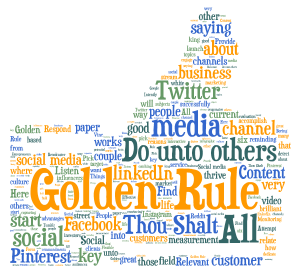 Earth Day is now in its 44th year. This is surely something to be celebrated, but it also presents a challenge when it comes to making it feel fresh. I suspect this very minute government agencies and environmental nonprofits all over the U.S. and beyond are intensely brainstorming how to make this year’s Earth Day special. Maybe these 10 suggestions will help.
Earth Day is now in its 44th year. This is surely something to be celebrated, but it also presents a challenge when it comes to making it feel fresh. I suspect this very minute government agencies and environmental nonprofits all over the U.S. and beyond are intensely brainstorming how to make this year’s Earth Day special. Maybe these 10 suggestions will help.
- Spotlight local issues. — Instead of tackling global climate change or pollution of the oceans, how about making your Earth Day event about something a little closer to home (not to mention more upbeat)? Some ideas: community gardens, food forests, repair cafes, clothing swaps, and bike share programs. There is so much going on at the local level related to sustainability. Use the energy surrounding these activities to inject some life into your own efforts.
- Make it about people, not trees.—I had a friend in college who, when I told her my major (Social Sciences with a concentration in Environmental Issues and Conservation), observed “I guess some people are people people, and some people are tree people” (relegating me to the latter group,). Make sure a visitor to your booth or event leaves understanding that Earth Day is about people, as are sustainable practices the rest of the year.
- Avoid visual clichés.—Use graphics other than the “whole Earth” or globe-type image. Your best bet? People – specifically, close-ups on faces and preferably faces that reflect your local demographics. Images of people performing the behaviors you want to encourage — whether it be recycling an unusual item, riding a bike or installing drought-tolerant landscaping — will make those issues come alive.
- Pick a theme.— Choose a topic to highlight this year and this year only. As with your graphic, select something more focused than the whole Earth. Making your event about a particular thing instead of Everything will go a long way toward making Earth Day relatable to your audience. Earth Day Network [http://www.earthday.org/greencities/earth-day-2014/] has declared this year’s theme Green Cities. Any organization, but especially a city, could build on this concept or come up with something else.
- Actively involve visitors.— Why not invite people in advance to bring clothing down to your booth and hold a swap meet right then and there? This will make a great photo opp for your Facebook page — and maybe the local paper — and it will engage your audience before, during and after the event. If a swap doesn’t quite fit in your case, brainstorm other ideas that will better support your message and still be fun and memorable.
- Swear off brochures.— Going paperless this year will force your team to come up with more creative ideas and will allow you to model very tangibly a low-waste behavior you’d like to see adopted throughout your community. After all, as interesting as we think our brochures and flyers are, they’re not likely to last more than a few days or hours before being put into the recycling bin (if we’re lucky). A less appealing scenario: Earth Day flyers littering the town square. It doesn’t take a PR expert to know that a spectacle like that would not be good for your agency’s image.
- Give the gift of experience. — Scrambling for giveaways again? How about giving visitors memories instead of tchotchkes? An experience of playing a game, sharing a story, having a picture taken with a silly mascot, … (insert your great idea here!) will be remembered far longer than a pencil or a keychain. The bonus? These photo-worthy moments will provide you with endless fodder for your social media.
- Remember the Next Day. — Earth Day can be a launch as well as a celebration. How can you reuse and recycle elements of Earth Day to extend the fervor and intention into year –round action?
- Listen up. — Use your presence at the event to gain insights into what matters to the citizens of your city. These learnings will pay big dividends in the months to come by saving you the time it would otherwise have taken to guess and by helping your outreach to be more on-target.
- Have fun.— This is perhaps the most important tip of all. We all work so hard to advance the cause of sustainability in our communities and the world. We owe it to ourselves and the planet to take at least one day a year to celebrate the progress we’ve made.

















